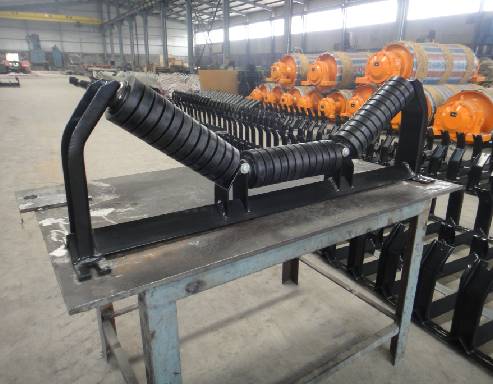 Afrikaans
Afrikaans  Albanian
Albanian  Amharic
Amharic  Arabic
Arabic  Armenian
Armenian  Azerbaijani
Azerbaijani  Basque
Basque  Belarusian
Belarusian  Bengali
Bengali  Bosnian
Bosnian  Bulgarian
Bulgarian  Catalan
Catalan  Cebuano
Cebuano  Corsican
Corsican  Croatian
Croatian  Czech
Czech  Danish
Danish  Dutch
Dutch  English
English  Esperanto
Esperanto  Estonian
Estonian  Finnish
Finnish  French
French  Frisian
Frisian  Galician
Galician  Georgian
Georgian  German
German  Greek
Greek  Gujarati
Gujarati  Haitian Creole
Haitian Creole  hausa
hausa  hawaiian
hawaiian  Hebrew
Hebrew  Hindi
Hindi  Miao
Miao  Hungarian
Hungarian  Icelandic
Icelandic  igbo
igbo  Indonesian
Indonesian  irish
irish  Italian
Italian  Japanese
Japanese  Javanese
Javanese  Kannada
Kannada  kazakh
kazakh  Khmer
Khmer  Rwandese
Rwandese  Korean
Korean  Kurdish
Kurdish  Kyrgyz
Kyrgyz  Lao
Lao  Latin
Latin  Latvian
Latvian  Lithuanian
Lithuanian  Luxembourgish
Luxembourgish  Macedonian
Macedonian  Malgashi
Malgashi  Malay
Malay  Malayalam
Malayalam  Maltese
Maltese  Maori
Maori  Marathi
Marathi  Mongolian
Mongolian  Myanmar
Myanmar  Nepali
Nepali  Norwegian
Norwegian  Norwegian
Norwegian  Occitan
Occitan  Pashto
Pashto  Persian
Persian  Polish
Polish  Portuguese
Portuguese  Punjabi
Punjabi  Romanian
Romanian  Russian
Russian  Samoan
Samoan  Scottish Gaelic
Scottish Gaelic  Serbian
Serbian  Sesotho
Sesotho  Shona
Shona  Sindhi
Sindhi  Sinhala
Sinhala  Slovak
Slovak  Slovenian
Slovenian  Somali
Somali  Spanish
Spanish  Sundanese
Sundanese  Swahili
Swahili  Swedish
Swedish  Tagalog
Tagalog  Tajik
Tajik  Tamil
Tamil  Tatar
Tatar  Telugu
Telugu  Thai
Thai  Turkish
Turkish  Turkmen
Turkmen  Ukrainian
Ukrainian  Urdu
Urdu  Uighur
Uighur  Uzbek
Uzbek  Vietnamese
Vietnamese  Welsh
Welsh  Bantu
Bantu  Yiddish
Yiddish  Yoruba
Yoruba  Zulu
Zulu Belt Conveyor Idler Types and Their Importance in Material Handling Systems
Understanding Belt Conveyor Idlers A Critical Component in Material Handling
Belt conveyors are ubiquitous in various industries, serving as a vital link in the material handling process. At the heart of these systems are conveyor idlers, which play a crucial role in ensuring the smooth operation of belt conveyors. In this article, we will explore the importance of conveyor idlers, their types, and the factors to consider when selecting them for different applications.
The Role of Conveyor Idlers
Conveyor idlers are the cylindrical components that support the conveyor belt and facilitate its movement. They are positioned along the conveyor's length, primarily functioning to maintain the belt's alignment, reduce friction, and enhance the overall efficiency of the conveyor system. By distributing the weight of the conveyed material and providing stability to the belt, idlers minimize wear and tear and prolong the lifespan of both the belt and the idlers themselves.
The design and arrangement of idlers can significantly impact the performance of the entire conveyor system. Properly designed idlers can reduce energy consumption by decreasing the resistance encountered by the moving belt, which is particularly important in large-scale operations where energy costs can be significant.
Types of Idlers
Conveyor idlers come in various types, each tailored to specific applications
1. Carrier Idlers These are the most common type and support the weight of the conveyor belt and the material being transported. They can be flat or trough-shaped to accommodate different load profiles.
2. Return Idlers Located on the return side of the conveyor, return idlers support the belt while it returns to the loading point. They prevent the belt from sagging and maintain proper tension.
3. Impact Idlers Found in loading areas where material falls onto the belt, impact idlers are reinforced to absorb shocks and reduce the risk of damage to the belt.
4. Training Idlers These idlers help maintain proper belt alignment, preventing the belt from drifting off track. They are essential in ensuring the longevity of the conveyor system.
belt conveyor idlers

5. Specialized Idlers Depending on the material being transported and environmental conditions, specialized idlers, such as self-aligning or dust-tight idlers, may be used. These designs address specific challenges, such as preventing dust escape or handling abrasive materials.
Selecting the Right Idlers
When choosing conveyor idlers, several factors should be considered to ensure optimal performance
- Load Capacity Assess the type and weight of material being conveyed to select idlers with appropriate load ratings.
- Belt Width and Speed Ensure that the idler dimensions match the belt size and speed to prevent excessive wear and enhance efficiency.
- Environmental Conditions Consider the operational environment, including temperature, moisture, and exposure to chemicals, to select idlers made from suitable materials that can withstand these conditions.
- Maintenance Requirements Look for idlers that are easy to maintain, as minimizing downtime is crucial in maintaining productivity.
- Cost-effectiveness While initial costs are a consideration, evaluating the total cost of ownership (including maintenance and replacement) is vital for making a sustainable choice.
Conclusion
In summary, conveyor idlers are a fundamental component of belt conveyor systems, playing a key role in ensuring efficient material handling operations. By understanding the different types of idlers and the factors influencing their selection, businesses can optimize their conveyor systems, leading to improved productivity and reduced operational costs. As industries continue to evolve, the importance of efficient material handling solutions, including appropriate idler selection, cannot be overstated. Investing in the right conveyor idlers is essential for any operation aiming to maximize efficiency and reliability.
-
Revolutionizing Conveyor Reliability with Advanced Rubber Lagging PulleysNewsJul.22,2025
-
Powering Precision and Durability with Expert Manufacturers of Conveyor ComponentsNewsJul.22,2025
-
Optimizing Conveyor Systems with Advanced Conveyor AccessoriesNewsJul.22,2025
-
Maximize Conveyor Efficiency with Quality Conveyor Idler PulleysNewsJul.22,2025
-
Future-Proof Your Conveyor System with High-Performance Polyurethane RollerNewsJul.22,2025
-
Driving Efficiency Forward with Quality Idlers and RollersNewsJul.22,2025





























